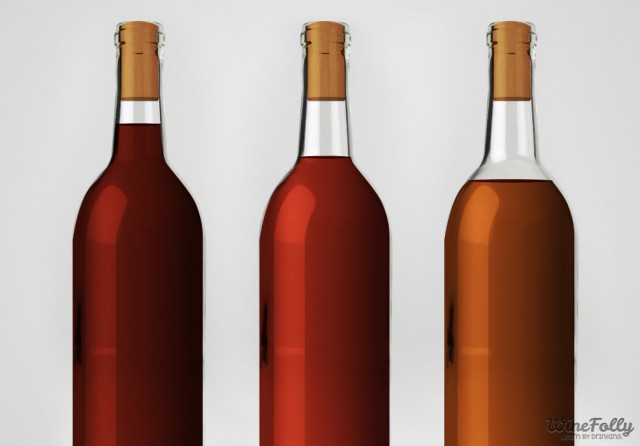We all know what happens when you leave a glass of wine out overnight. Travesty. However, until recently there have been no tools to measure the effect of oxygen on wine over time.
Oxygen is both a necessity and a detriment to wine. It enters a wine bottle through the cork. What you might not know is that oxygen is dissolved in the wine itself.
Oxygen Giveth and “Taketh-Awayeth”
There is such a thing as too much or too little oxygen. So what’s the secret to the right amount of oxygen and wine? And how can you as a wine drinker choose the right wine to drink at the right time?

Wine Tastes Oxidized at 8.6 ppm
Our sense of taste can identify an oxidized wine at 8.6 parts per million (ppm). So what’s the ideal ratio? No more than 6 ppm. In order to test this, we tasted a series of identical wines that had been stored with different levels of breathable corks.
The wines we tasted included a Côtes du Rhône called Chateau Mongin and a Sauvignon Blanc called Nyakas from Hungary. The results were remarkable.
How did we test oxygen levels in wine?
A new tool in the wine trade has made it possible to study the effects of oxygen on wine over time. The tool is called NomaSense and it’s a luminescence-based oxygen sensor for wine.

NomaSense can measure both the dissolved oxygen in a wine and the oxygen in the head space of wine bottles. How does this help? It shows us what’s happening inside a bottle before you open it. This type of information could guarantee the quality and provenance of icon wines.

Currently the tool is being used on winery equipment to help wineries determine how much dissolved oxygen is in the wine before bottling. Too much dissolved oxygen will make the wine degrade too quickly.
From the data Nomasense has collected, they have identified the “sweet spot” for oxygen-to-wine ratio. They see about 6–8 ppm (parts per million) of oxygen to wine as the most ideal range based on taste testing.
What we learned when testing oxygen in wine
There is an obvious “sweet spot” to the preferred level of oxygen in a bottle of wine when you drink it. Tasters prefer wines with no more than 6 ppm of oxygen (and usually a little less) in the bottle.
The wines within the “sweet spot” tasted better than other samples with too much or too little oxidation.
Wines that had too little oxygen (aka they were “reductive”) tasted “foxy,” as in it was like smelling a dirty dog! Over-oxidized had more cooked fruit flavors and tasted flat with a lack of complexity.
What was interesting was the differences were more obvious (even to a novice) in white wine than in red wine.

Is There Anything You Can Do?
Unfortunately, if a wine is oxidized there is not much you can do to ‘unoxidize’ it. However, there are a few tips for reductive wines and avoiding over-oxidized wines.
Dealing with Reduced Wine aka Animalistic Flavors
A wine is Reductive (aka reduced) when there is too little oxygen in the wine. Tasting a wine that is half-suffocated tastes more like a hot dog than a glass of wine. The flavors are more meaty vs. fruity and also less bright (acidic). Reduction in wine is common with wines under screw cap or in wines produced in an environment with too little air (such as Beaujolais).
- Decant a Reduced Wine Many of the off aromas dissipate after decanting
Drink Wine During its Prime
Most wines from the grocery store are not worth cellaring. While you may discover a bargain from time to time, most value wines should be enjoyed when they’re young. The fact that the closure affects a wine as much as it does only means you’ll be introducing more variability the longer you age it. For example, a bottle of 2011 Riesling ($9) from Chateau St. Michelle that released in May of 2012 might not taste great in 2014. If you’d like to understand what makes a wine last, check out what makes a wine age-worthy for advice.
- When to Open? If you’re not sure when to open your wine, ask the winemaker. If they’re not available, check out the article on vintage variation and wait longer to open your wine from a colder vintage.
- Drink it All If you find a cheap wine that tastes great now, buy enough to be consumed within a few months. Need some cheap wine recommendations?
